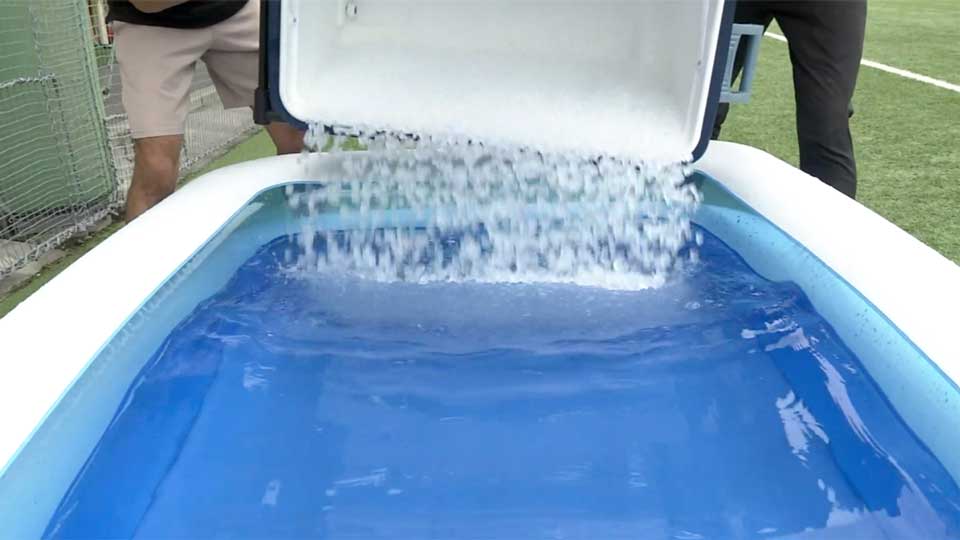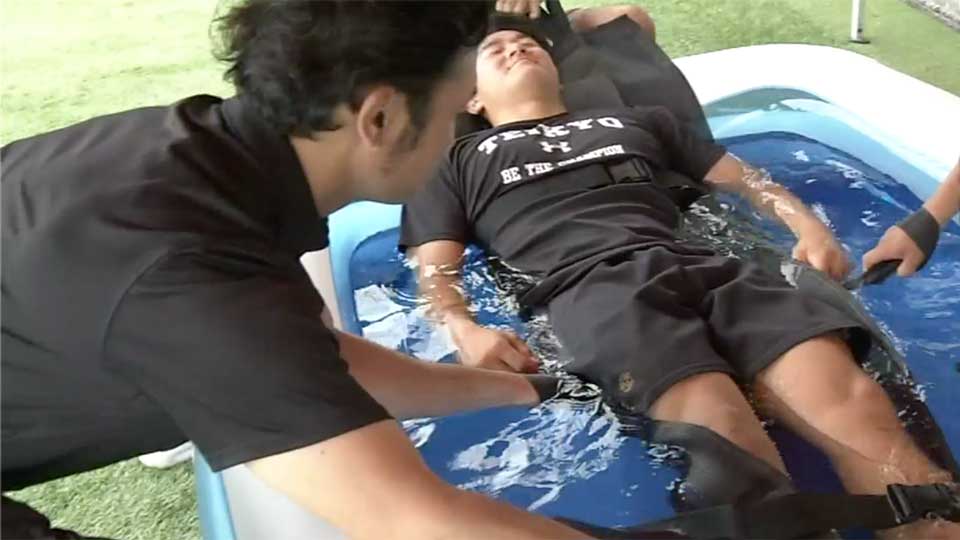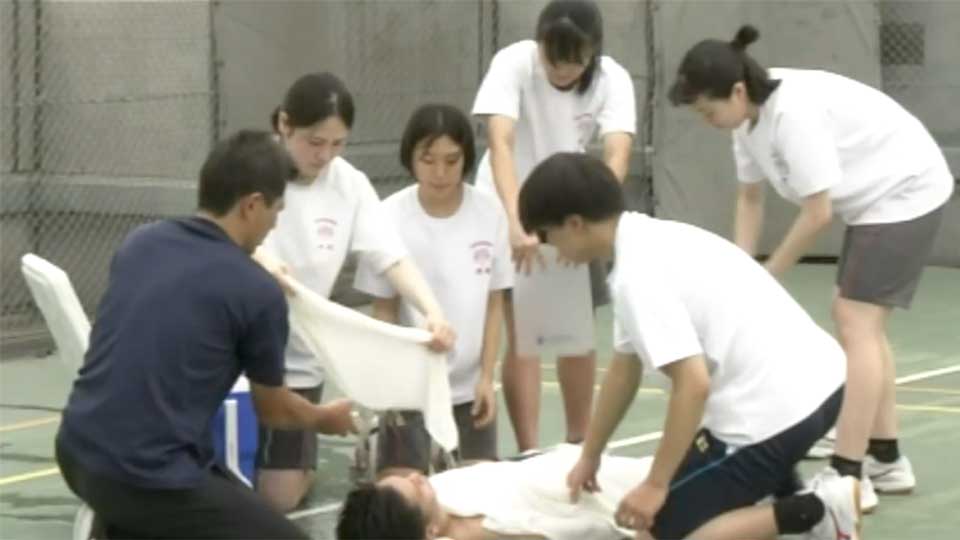Call ambulance when danger signs appear
A basic principle in dealing with heatstroke is to suspend activities if children show dangerous signs such as wobbling, numbness in hands and feet, or violent irritation during exercise. Some may show confusion or inability to properly communicate.
Instructors or supervisors sometimes misinterpret such behavior as just a bad attitude and can miss heatstroke warning signs. But if children display dangerous symptoms, their caretakers should not hesitate to call an ambulance.
Cool victims down as soon as possible
Heatstroke victims should be cooled down as soon as possible while waiting for emergency responders.
Widely used methods involve holding ice bags in their armpits, or fanning them in the shade. But research has found that such methods are inadequate in situations in which people's lives are in imminent danger. A US heatstroke research institute found that ice baths are most effective.
Preparing an ice bath requires a small pool, a hose or other method to fill it with water, and a large amount of ice.

Place the heatstroke victim in the pool of ice water to cool down their entire body all at once. Add ice as needed to keep the water temperature cold.
Researchers say that lowering the water temperature to 2 degrees Celsius with ice can lower body temperature by 0.35 degrees Celsius per minute. They say that the ice bath method is about 10 times more effective than putting ice bags in a victim's armpits.

Tsuru Kenichiro, assistant professor at Teikyo University's Institute of Sports Science & Medicine, said science has verified that the most efficient way to treat heatstroke is "to cool the whole body at once."
But he also cautioned that the ice bath method should be supervised by experts to avoid over-cooling dangers, or even hypothermia.
Use cool, wet towels to treat heatstroke
If preparing an ice bath is impossible, experts suggest another method requiring only a cooler box and 5 or 6 towels.
First, they advise soaking the towels in the cooler box, or a bucket filled with ice water. They say the towels should then be placed on the heatstroke victim without squeezing the water out.

They say people should try to cover the victim's entire body with the towels soaked in ice water. The towels will warm up in a couple of minutes, so they need to be immediately soaked in ice water again. The victim should be covered in the towels for at least 10 minutes until the ambulance arrives.
When neither ice nor towels are available, covering the victim in cool tap water can also be effective.
Tips to avoid heatstroke
Treating heatstroke can save lives, but preventing it in the first place is ideal.
Associate Professor Hosokawa Yuri of Waseda University's School of Sport and Sciences is an expert on heat stroke, who warns that some conditions can raise the risks.
She says these include inadequate sleep, lack of rest time and intense exercise exceeding one hour. She also says the danger is highest when people's bodies are not accustomed to the heat.
People need to be especially careful when they resume an activity after a hiatus, she says, and suggests starting with light exercise instead of a long workout.
For more information on heatstroke risk across Japan, click here.
